With this post I conclude setting out Nanine Charbonnel’s tables associating the gospels with Jewish Scriptures and other Jewish writings. With this section completed I am free to move on to discuss the remainder of her book, Jésus-Christ, Sublime Figure de Papier.
The value of tables like these comes more from preparing them — or returning to them from time to time to take them in point by point — than a quick glance at them. One is compelled to ask about the intellectual world of the evangelists. One is brought into the mysterious world of what the authors read and spoke about, how they thought about what they read, what flashes of insight were sparked by their conversations all before anything was put into writing. Then by what creative process did each evangelist weave anew another variant of a story about a figure who represented a new Israel.
In the table below I have once again made a few edits to Charbonnel’s original. For one thing, not a few of the biblical references in French do not match those in English. All of these have been revised to their English references. A few times I was not sure what a reference or source meant so I have added a question mark to each of those places. (Example, [RG] — is this a reference to Rene Girard? If so, what work of his?) In some cases I have left Charbonnel’s notes entirely and replaced them with translations from the French (or Italian) source that had been cited.
None of the illustrations is in Charbonnel’s original table.
- Some interesting features this time:
- The crown of thorns might reasonably be associated with the parable of the thornbush that in the OT parable “would be king”.
- Pilate’s famous “Here is the man!” statement has several possible sources in the OT, all associated, ironically, with ascension to kingship.
- Matthew’s mob crying out for Jesus’ blood to be “on their heads” has in modern discussion been said to be an anti-semitic trope but when one notices its possible sources in the Jewish scriptures one sees it as originally not necessarily bearing any particularly anti-semitic connotation.
- I had always been suspicious of those comments linking the old Hebrew letter tau with the cross of Jesus, but I am willing now to concede that there just might be something to the link. (I’m not suggesting that the original idea of a cross came from the alphabet, not at all.)
- Another interesting link was the Jewish Scripture associations of the “good” thief’s dispute with his “bad” companion.
- We all surely know of the Amos association with the sun going down at noon, but I had overlooked till now that this same image in Amos is tied to mourning for an only son.
- The titulus crucis carries more Jewish Scripture echoes than I had ever suspected.
- Nor was I aware of the earthquake at the time of Joshua’s death — a sign divinely activated to draw the population’s attention to that grave moment.
- Again, we have several links to intertestamental literature and later rabbinic writings. And again, it is very reasonable to accept that those rabbinical writings had their origins in the Second Temple era and were known to the evangelists.
- One related detail is the teaching that when Moses struck the rock twice, the first time blood flowed out, the second time, water. What was on the evangelist’s mind when he wrote of the spear drawing both blood and water from Jesus?
- Justin Martyr’s quotation of Jeremiah is of special interest.
- So is a Codex Bezae version of the Gospel of Luke. Again, we meet another piece of evidence that the evangelists knew the writings of Josephus, especially Wars. The east gate that miraculously opened by itself as a warning of Jerusalem’s doom was said by Josephus to have been so large that it took twenty men to open. The same image is found in Codex Bezae’s Luke.
- I had known of the “I am” statements in the Greek Gospel of John but for some reason till now had overlooked them in the Gospel of Luke.
- Charbonnel speaks of OT passages where one is said to “pass through walls” by the power of God, but the Hebrew speaks of scaling over. (A French translation does say “pass through” as the resurrected Jesus did.)
- I would like to track down the Exodus Rabbah statement (in English) that foreshadows the “Do you seek the living among the dead” saying.
- Oh yes… one more of particular note (for me) — is the “beloved disciple” a figure of the church?
|
The table is primarily a translation and slight modification of pages 183-226 of Nanine Charbonnel’s Jésus-Christ, sublime figure de paper. All posts archived here. (I have added the images)
|
| The Passion of Jesus
John 1:29 Behold, the Lamb of God! |
The Passion of Isaac + Isaiah
Exodus 12:23 The night of the Passover (Egyptian firstborn struck down) Isaiah 53:7 he did not open his mouth; he was led like a lamb to the slaughter |
| the arrest Matthew 26:54-56
John 18:12 they bound him |
Isaiah 53:12 he was numbered with the transgressors
Genesis 22:9 he bound [“akedah”] his son Isaac |
| the accusation
Matthew 26:62-63 The high priest stood up and said to Jesus, ‘Have you no answer to these accusations against you?’ But Jesus remained silent. |
Zechariah 3:1 Joshua [=Jesus] the high priest standing before the angel of the LORD, and Satan standing at his right side to accuse him.
Isaiah 53:7 he did not open his mouth |
| John 18 – the Betrayal of Peter Matthew 26:34; Mark 14:30; Luke 22:34John 18:27 The rooster crowed 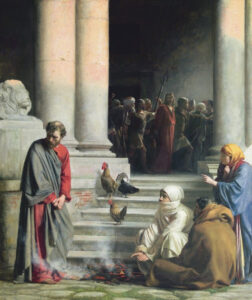 |
The rooster of the Temple? The cock of the Kapparah ritual? The rooster of the Temple? The rooster of the Kapparah rite?
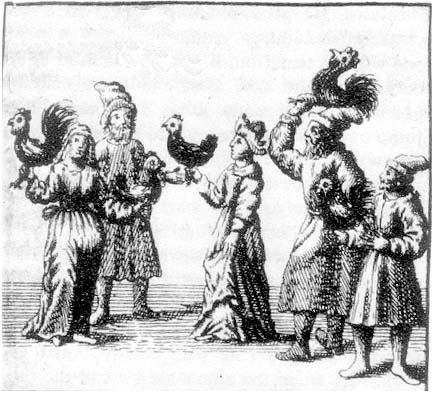 Or rather = the rooster’s ability to distinguish night and light? Job 38:36 |
| Luke 23:11 They adorned him with a magnificent robe before sending him back from Herod to Pilate.
John 19:5 a purple robe |
= the sacred garment of the High Priest Ex 28; the robe of King Saul, the multicolored tunic of Joseph, the porphyrion of YHWH? [Yuval]
(I have not read the Yuval reference; the porphyrion appears to me to refer to the royal robe of Yahweh. The root of the word means purple; Porphyrion was also the name of the king of giants born out of the blood of Cronus.) |
| a crown of thorns | The Burning Bush
+ the allegory of the trees in Judges 9:7-15 : it is the thornbush that is declared king + crown=Torah? |
| John 19:35 Pilate leads Jesus out to the crowd, wearing a purple robe and crown of thorns, and says, Here is the man! | = Textually I Samuel 9:17, the words that God says to Samuel, identifying the first king of the Jews when he sees Saul approaching: . . . “Here is the man of whom I told you: this one will rule among my people”. Samuel will anoint him in 1 Samuel 10:1 and Saul will thus become the first king of Israel
+ Zechariah 6:12 contains the expression “Here is the man…” that is applied to a Jesus. |
| Pilate washes his hands | Deuteronomy 21:6-7 [see Sota 9:6] Then all the elders of the town nearest the body shall wash their hands over the heifer whose neck was broken in the valley, and they shall declare: “Our hands did not shed this blood, nor did our eyes see it done.”
+ Psalm 26:4-6 I do not sit with the deceitful, nor do I associate with hypocrites. I abhor the assembly of evildoers and refuse to sit with the wicked. I wash my hands in innocence and go about your altar, Lord. + = what does a Jew do before writing the name YHWH? |
| Pilate’s wife | the good gentile, the “anti-wife” of Potiphar (Genesis 39) |
| the people, “Let his blood fall on us!” | the condemnations in Leviticus 20:9 and Joshua 2:19 |
| Spitting: Mark 14:65 Then some began to spit at him; they blindfolded him, struck him with their fists | = Isaiah 50:6 I offered my back to those who beat me, my cheeks to those who pulled out my beard; I did not hide my face from mocking and spitting. |
| Flogging | = 2 Maccabees 6:30 the death of Eliezer (Lazarus), When they had beaten him almost to the point of death, he groaned and said, “The Lord possesses all holy knowledge. He knows I could have escaped these terrible sufferings and death, yet he also knows that I gladly suffer these things, because I fear him.” |
| Mocked, Drawing lots for his clothing Luke 23:34 ; John 19:24 |
Psalm 22:7 (LXX 21) All who see me mock me; they hurl insults, shaking their heads.
Psalm 22:18 They divide my clothes among them and cast lots for my garment. + Jonah 1:7 and the lot fell on Jonah |
| The Cross | = Exodus 17, the arms of Moses during the battle against Amalek (=sinful nation): when he has his arms raised, Israel is victorious, when he lowers his arms, they lose, and Jesus I (=Joshua) kills the sinners
+ Ezekiel 9:4 and his Tav/taw/tau |
| John 19:17 Jesus himself carried the wood of his cross | Genesis 22:6 Isaac himself carried the wood for his sacrifice
+ 2 Samuel 15:30 David ascended the Mount of Olives, weeping |
| Mark 15:21 they forced a passer-by coming in from the field to carry Jesus’ cross — Simon of Cyrene | = Shimshon [Samson] who has the strength of God, Judges 13-16 [René Girard(?)] |
| To the place Golgotha = the Skull | Some Church Fathers, when explaining the term Golgotha, mention a Jewish tradition according to which Adam’s skull is buried in the place of the crucifixion. Epiphanius of Salamis writes:
When Adam was expelled from paradise, he lived in front of paradise; then he came to Jerusalem and, after his death, was buried on Golgotha. At first sight it seems we have here a Jewish theological reflection. Testament of Levi prophesies that the Messiah will open the gates of heaven and take away the sword that threatens Adam. According to Jewish tradition, the Messiah will return the six objects that Adam lost when he disobeyed. We know that the Jewish tradition, attested by the Book of Jubilees 4:29, had located the tomb of Adam in the temple of Jerusalem, and more precisely near the altar of sacrifices. When the Church Fathers speak of Adam’s skull on Golgotha, they add that it is a Jewish legend. Basil of Seleucia states: According to a Jewish legend, Adam’s skull was found there. Solomon learned of the fact from his wisdom. [= Basil of Seleucia, Letter 38] The Jerusalem Talmud repeats four times that in the temple of Jerusalem, under the altar, the skull of Arauna, the Jebusite, was discovered at the time of King Hezekiah. Now, a series of circumstances is responsible for a re-reading of the term Arauna. This term, after a long evolution, will eventually be read Adam. Arauna is read Ornan in 2 Samuel 24:24 and Aran in the Syriac version of the Bible. The Aran form was changed to Adan, due to a confusion between the Hebrew letters resh and dalet. The Fathers of the Church witness the evolution of this tradition when they speak of a Jewish legend that locates the skull of Adam in the temple. After the destruction of the temple, Jewish traditions related to the temple in Jerusalem were linked to the Holy Sepulcher. The place of the crucifixion and resurrection was about to become the new temple. There, those who wanted to pray in spirit and truth could meet Christ, whose resurrected body is the true temple.
[Manns, 217 f. Translated from Italian]
|
| The two thieves | Luke 22:37 For I tell you that this Scripture must be fulfilled in me: ‘And he was numbered with the transgressors.’ (Isaiah 53:12).
+ the mother of the sons of Zebedee Matthew 20:20-22 ; Joseph with Pharaoh’s two servants, Esther with her two maids; = 1 Kings 21:10 The passion of Naboth between two scoundrels [Mergui, Comprendre, p. 14] |
| Luke 23:39 One of the criminals who hung there hurled insults at him: “Aren’t you the Messiah? …” | = the children of Israel in the wilderness, Psalm 78:17-18 “They rebelled against God Most High. They even dared to put him to the test” |
| Luke 23:40 The “good” thief reprimanded the “bad” thief, “do you not fear God since you are under the same sentence”
and Christ’s response |
He obeyed the commandment of God: “you must rebuke your neighbour so you will not bear his guilt” – Leviticus 19:17. [René Girard(?)]
+ Jewish tradition comments on this prescription of Leviticus “whoever admonishes his neighbour in the name of heaven deserves a share with the Almighty” cf Proverbs 28:23 |
| Luke 23:36 the soldiers give him vinegar to drink. Matthew 27:34, 48 ; Mark 15:23 ; John 19:28-29 |
Psalm 69:22 In my thirst, they gave me vinegar |
| Mark 15:29 Passers-by cursed him | Psalm 109:25 I am an object of withering to them; they look at me, they shake their heads
+ Lamentations 2:15 All who pass your way … scoff and shake their heads at the daughter of Jerusalem |
| Luke 23:44 It was about the sixth hour … there was darkness over the whole earth until the ninth hour. | Amos 8:9-10 I will make it as the mourning of an only son . . . I will make the sun go down at noon and darken the earth |
| John 19:28-29
killed |
“so that scripture is perfectly fulfilled”
Isaiah 53:5 But he was pierced for our transgressions, he was crushed for our iniquities; the punishment that brought us peace was on him, and by his wounds we are healed. |
| pierced John 19:37 | John quotes Zechariah 12:10 They will look on me, the one they have pierced … and grieve bitterly for him as one grieves for a firstborn son.
+ Psalm 22:16 they pierce my hands and feet |
|
The titulus : in Matthew and Luke, the expression “this is he”, is undoubtedly the equivalent of the Hebrew [zeh hū] |
= This expression appears only once in the Hebrew Bible when the prophet Samuel is charged by God to designate the King of Israel who is to succeed Saul (1 Samuel 16:12) |
| John 19:22 And Pilate answered the high priests, What I have written, I have written. |
This sentence recalls an episode from the book of Esther: for any writing written in the name of the king and sealed with his seal is irrevocable (Esther 8:8), where the writing in question is a decree from King Ahasuerus whose aim to save the Jews. [René Girard(?)]
|
| John 3:14 lifted up from the ground | “Just as the brazen serpent was lifted up by Moses in the desert [Numbers 21:9], so must the Son of Man be lifted up”
+ Isaiah 52:13 the Suffering Servant “he will be raised and lifted up and highly exalted” |
| John 19:23 The seamless tunic [chitôn], woven in one piece from the top. | = the magnificent tunic, in Hebrew ketonet, of Joseph, the son of Jacob [Genesis 37:3; trad. seven, a chitôn] |
| John 19:26-27 Jesus gives a new son to his mother, and a new mother to John | = Genesis 35:16-19 in Bethlehem “At the birth of a new Son, Rachel dies, as in John 19 the Son dies, leaving a new son to his mother” [Lefebvre, 2004] |
| John 19 The 7 Words of Christ on the Cross:
1 Father, forgive them, for they do not know what they are doing 2 Truly I say to you, today you will be with me in paradise |
Isaiah 53,12 “he interceded for the transgressors”
= 1 Sam 28:19: Samuel said to Saul “Tomorrow, you and your sons, you will be with me” [and therefore purified] |
| 3 Mother, here is your Son, Here is your mother | = the exchange of peoples? |
| 4 Eli Eli lama sabactani, My God, my God, why have you forsaken me? Mark 15:34 | = quoting Psalm 22:2 “Eli Eli lama sabactani,
+ the midrash (Megilla 15b, and Yoma 29a) says that Esther recited this Psalm 22:2  + this Psalm was recited at the first hour of the day |
|
5 I thirst |
= Psalm 69:21 “And to quench my thirst, they drink me sour wine” |
| 6 It is finished | = end of creation |
| 7 Father, into your hands I commit my spirit | = Psalm 31:5 (verse 5 of Psalm 31 was recited in the evening prayer) |
| earth trembles | Ezekiel 37:7 + Qohelet Rabba reports that when Joshua died, the Israelites were so busy dividing the land among themselves that they did not pay the last honours to their leader. God then made the mountain tremble … [Mergui, Comprendre] |
| John 19:34 (and John 7:38 a spring of living water will come out of him): spear strike, from the pierced side spring new fountains (water and blood) | = Exodus 17 Moses’ rod striking the rock the law of Moses (In Targum Jonathan on Numbers 20:
+ = Ezekiel 47 the source of living water which must spring from the Temple, water is the symbol of the spirit; it was the spring that came out from the right side of the new Temple that made the bitter waters of the Salt Sea sweet. + the entrails of Christ = the [healing] liver of the fish in Tobit and Sarah (Claudel) — Tobit 6:5 |
| Mocking Matthew 27:43 | = Psalm 22:8-9: All those who see me laugh at me, they grimace their lips, shake their heads, “He trusted in Yahweh, let him deliver him, let him save him since he loves him!” |
| the tombs were opened Matthew 27:52 | = Ezekiel 37 |
| Buried among the rich: Matthew 27:57 a rich man from Arimathea [= Ramatayim?], named Joseph, who was also a disciple of Jesus. […]. 59 Joseph took the body, wrapped it in a white shroud, 60 and placed it in a new sepulchre, which he had hewn out of the rock. | = Isaiah 53:9 Their sepulchre has been placed among the wicked. His tomb with the rich man, Although he had not committed violence And there was no fraud in his mouth. |
| Buried in Joseph’s tomb, in his place! | = the Messiah son of Joseph |
| Matthew 27:60b then he rolled a large stone at the entrance to the sepulchre | = Joshua 10:18 “roll large stones at the entrance of the cave” |
| Luke 23:53 (Codex Bezae): “And he took down the body of Jesus and wrapped it in a linen shroud, and laid him in a rock-hewn tomb, where no one had ever yet been laid and when he was interred a stone was placed upon the tomb which twenty men could hardly roll.” | = the Temple: Flavius Josephus, “the eastern door of the inner courtyard, which was in bronze and quite massive, that twenty men in the evening closed with difficulty”, War, VI, 293
|
| Matthew 12:40 For as Jonah was three days and three nights in the belly of a great fish, so will the Son of man be three days and three nights in the bosom of the earth. | = Jonah 1:17 |
| The third day | = Hosea: the third day (of Genesis) is the day when life is restored to the dead, “on the third day he will raise us up and we will live before him” |
| descent into Hell | Psalm 16:10 (LXX 15): “You will not abandon my soul to Sheol. You will not let your righteous see the pit”
+ Jeremiah “the Lord has remembered the dead of Israel who sleep under the earth; he came down to them to tell them the good news of salvation” (quoted by Justin, Dialogue, 72) |
|
Risen, raised, stands
|
= Isaac freed from death
+ Ezekiel 37:13 and you, my people, you will know that I am the Lord when I will have opened your sepulchres, and that I will have raised you from your sepulchres + Isaiah 53:10 After having given up his life as a sin offering, he will see seed and prolong his days. + 2 Kings 20:5 Hezekiah healed on the third day, returns to the temple + = Hosea 6:2 on the third day he will heal us [Septuagint, will raise us up] |
|
Mark 16:3 they said Who will roll away the stone for us?
|
= Genesis 29:10 Jacob goes forward and rolls the stone away from the well and gives drink |
|
Luke 24:4 two men with shining clothes
|
Moses and Elijah in the Transfiguration
|
| Matthew 28:2 an angel of the Lord came down from Heaven, came and rolled away the stone, and sat on it | – the presence of God (Genesis 16:7; 3:2); Daniel 7:8-10 the angelic judges sat down, and the books were opened |
| Matthew 28:4 At his sight the guards trembled with fear and became as dead | Exodus 19:16-20 the terror of the people at Sinai |
|
The holy women
|
= the daughters of Zion, Psalm 9:14-15 |
| Luke 24:5 why do you seek among the dead the one who is alive? | = Exodus Rabba 5:14: Moses to Pharaoh: Do we seek traces of the living among the dead?[Remaud p. 7] |
| John 20:15 Madeleine believes that it is the gardener [Greek kèpouros] | = Eve in the Garden of Paradise |
| Matthew 28:18 all power has been given to me in heaven and on earth | = Daniel 7:14 “to him [the Son of Man] was given dominion, glory and kingdom” |
| Matthew 28:20 Go and teach them to do everything I commanded you | = Exodus 7:2 (new Moses) |
| John 20 Jesus passes through despite the locks | Isaiah 22:22 When he opens, no one will close. When it closes, no one will open
+ Psalm 18:29 With my God, I will pass through the walls |
| Jesus promises Peter the power to close and open the locks of the kingdom Matthew 16, “I will give you the keys to the kingdom of heaven” | = Isaiah 22:22 the Messianic Servant carries the key of the royal palace on his shoulder: “I will put on his shoulder the key of the house of David” |
| Luke 24 He appeared | The great theophanies: Gn. 12, 7; 17, 1; Judges 13, 21 |
|
Luke 24:39 He saith unto them, It is I myself, I AM …
|
Exodus 3:14 The Divine Name (LXX: ego eimi) |
| Luke 24:42-43 Risen Jesus eats grilled fish | = the fish (Leviathan) which will be eaten at the end of time when the Messiah comes (in the Middle Ages, it is said that a piece of fish is put on the Passover seder plate) |
| Thomas, the twin (of one hearing the gospel read?) – Incredulous | = Gideon asks God for proof (the fleece) (Judges 6:36-40)
+ The anti-Tobit 12:19 I appeared, but I neither ate nor drank, it was a vision ( said the angel Raphael.) |
| the wound in the side | the wound – the new Jacob (Genesis 32?) |
| John 21 the second miraculous catch | those of the gentiles |
|
Peter naked |
= Adam? Or the man without the law |
| 153 fish | = Cyril of Alexandria 100 = the pagans, 50 Israel, 3 the trinity + Jerome all known fish species
As for my 153 fish from the beginning, of course they are also gematric: 153 is indeed the value of BNY H’LHYM, “the sons of Elohym”, “the sons of God”, as well as of HPSḤ , “The Passover”, “the Paschal Lamb”, etc. – expressions which, in the corpus, are not of the last importance, . . . [Dubourg I, 166. Translated from French] |
| the pilgrims of Emmaus | = victory of the years of Judas Maccabeus in 165 BC over the pagans in “the plain of Emmaus” (1 Maccabees 3:38, 57; 4:1-27), celebrated by the feast of Hanukkah; has since become a Roman administrative centre |
| “And he explained to them in the Scriptures all that concerned him” | = the Jewish method of Haraz (?) (of the necklace) |
| Matthew 28:16 the disciples, once leaving Egypt of doubt and fear, are invited to the top of the mountain (to receive a mission there – to announce the gospel – and a promise – (28:20) | = Exodus 3:12 To Moses, God said: “I will be with you, and this will be the sign that will show you that it is I who sent you:” When you have brought the people out of Egypt, you serve God on this mountain” |
| Ascension Luke 24:50 | = the final fulfilment |
| he took them to Bethany, 24:51 and raising his hands, he blessed them | = Leviticus 9:22 The final blessing of Christ is the blessing pronounced on the people by Aaron: “then lifting up his hands above the people, he [Aaron] blesses them” |
| Luke 24:51 “Now, as he blessed them, he parted from them and was carried up to heaven” and Acts 1:9 “He was taken up from the earth, as they beheld, a cloud received him and carried away from before their eyes” | 2 Kings 2:9-14 Rapture of Elijah the ascension of the prophet, caught up in the merkaba (The chariot of God described in chapter 1 of Ezekiel):
+ Genesis 5:24 Enoch |
| For forty days after his resurrection, Jesus was seen by the apostles and also by more than five hundred brothers at a time (1 Corinthians 15:5-7), then he was lifted up into heaven (Acts 1:2-3). | = this is the answer to Agur’s question: Who ascended into the heavens and who came down? (Proverbs 30:4). And Paul writes to the Ephesians: “He that descended is the same as he who also ascended above all the heavens” (Ephesians 4:10) |
| Pentecost | |
| 50 days after Passover | = Elijah: “and the spirit of Elijah remained on Elisha”
= feast of Shavuot 50 days after Passover |
| descent of the Holy Spirit | Descent of Moses with the Tables of the Law |
| everyone speaks in their own language, and everyone understands | the anti-tower of Babel |
.
Future posts will continue this series.
Charbonnel, Nanine. 2017. Jésus-Christ, Sublime Figure de Papier. Paris: Berg International éditeurs.
Dubourg, Bernard. L’invention De Jésus; Tome I. L’hébreu Du Nouveau Testament. Accessed August 19, 2019. http://archive.org/details/LinventionDeJsusTomeI.
Manns, Frédéric. Gesù figlio di Davide. Il vangelo nel suo contesto giudaico = Jesus son of David. The Gospel in its Jewish Context. Milano: Ancora, 1998.
Mergui, Maurice. 2015. Comprendre Les Origines Du Christianisme: De L’eschatologie Juive Au Midrash Chrétien. Objectif Transmission.
If you enjoyed this post, please consider donating to Vridar. Thanks!


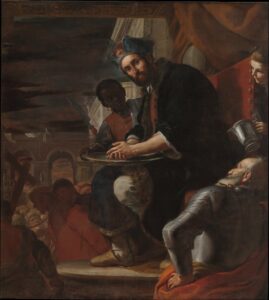
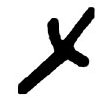
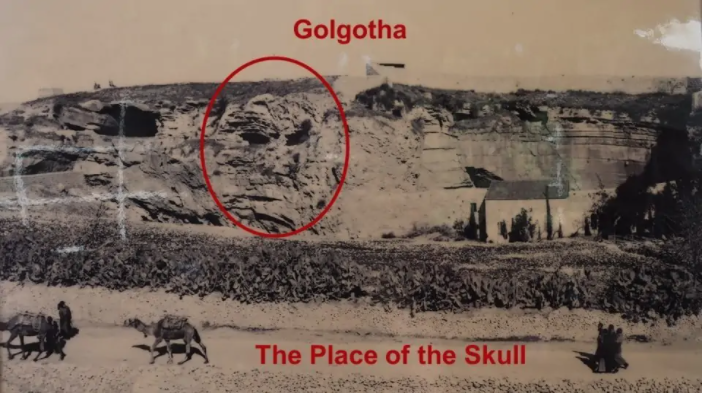
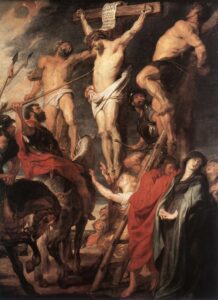
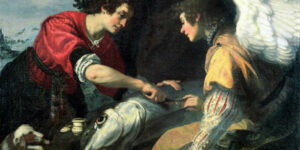
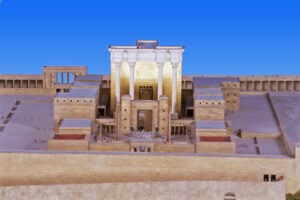
Hi Neil,
about the midrashical source of the crucifixion, Maurice Mergui thinks that it is the Jewish legend alluded implicitly in Numbers 21:9, i.e. that the Genesiac Serpent was ‘cursed’/crucified by the Jewish god, “This bronze snake put on a pole evokes the miracolous victory of the Messiah on the eschatological Serpent”.
Another OT character cursed by YHWH is Cain, and the famous ‘mark of Cain’ (Genesis 4:15) is supposed to be a tau, too. Hence note the curious coincidence of the presence, in both the episodes (the divine punition of the Genesiac Serpent and Cain), of the sequence: (1) question (2) answer (3) cursing/crucifixion? In the case of Cain, I may add: (4) glorification.
The same sequence found in the pivotal Gospel episode:
So they bound Jesus, led him away and handed him over to Pilate.
“Are you the king of the Jews?” asked Pilate.
“You have said so,” Jesus replied.
[Pilate] had Jesus flogged, and handed him over to be crucified.
The reason behind this enigmatic midrash, according to Mergui, is the passage beyond the Limit (curiously, the same name of the cosmic cross where the Valentinians placed the Passion of the Aeon Christ): when the Messiah is confused with the Genesiac Serpent (enemy of YHWH), it is the final apocalyptic signum that he has “really” arrived.
The tables in these posts are not comprehensive. Their main contribution is that they attempt to cover all the gospels in their entirety and demonstrate their close relationship with Jewish Scriptures and other writings.
For further details, see the list of Howard Clark Kee’s 160 scriptural quotations and allusions to Mark 11-16 alone in https://vridar.org/2017/05/01/160-scriptural-quotations-and-allusions-in-mark-11-16/
Then there is Karel Hanhart’s case for the tomb carved from the rock itself being a midrash on Isaiah 22’s lament over the destruction of the temple — https://vridar.org/2014/04/18/jesus-crucifixion-as-symbol-of-destruction-of-temple-and-judgment-on-the-jews/
And Rikki Watts has written a book detailing but one gospel’s debt to the Book of Isaiah and the theme of the Second Exodus.
And several have developed Paul’s pointer to the Binding of Isaac (along with Deuteronomy’s curse passage) as a key source of the Passion of Christ — as does Mergui, also, in Etranger sur la Toit and Comprendre les Origines… He does mention briefly the serpent of Moses as a probability, too, but not to the exclusion of other references.
I would be very surprised if Mergui turned to a Valentinian concept. You did not supply any sources for your comment.
Some precisations:
1) Mergui says explicitly, in his book
Comprendre les origines du christianisme , that “probably” the midrashical source of the crucifixion is the crucifixion of the Genesiac Serpent by YHWH.
2) Mergui says explicitly that the enigmatic midrash “crucified Jesus== cruxified Genesiac Serpent” is explained as “Passage beyond the Limit”: the Messiah appears at the culmination of “anomía”, i.e. when the maximum evil is confused with maximum good, Jesus with Barabbas, the Messiah with the Genesiac Serpent, the same heresy (=Barabbas is a rival Jesus) “proves” that the End is Near “therefore” the Messiah is arrived.
3) I, not Mergui, have made only 2+2: the Valentinians talked about the Passion of the Aeon beyond the cosmic Horos/Stauros in outer space: a celestial cross called also LIMIT. Coincidence?
The Valentinians and in general the anti-YHWH “heretics” identified Jesus with the Genesiac Serpent, or Cain. In short, the Genesiac Serpent is a friend of humanity, etc. Coincidence?
Apart from this, I see a curious anomaly in Mergui. He seems to be eager to talk like you: the Gospels are 100% midrash, etc. But he has realized that the crucifixion can be explained “probably” (his precise word) as reference to the fate of the Genesiac Serpent. The obvious “embarrassment” (afterall, the Serpent is Satan, isn’t he?) is deliberate, according to Mergui. But is the same Mergui embarrassed by this his finding?
And how could I have overlooked the Elijah-Elisha source for the synoptic gospels per Adam Winn and Thomas Brodie!
I don’t condemn your appeal to Brodie and Winn. I am only pointing out that, when it deals with the midrashical origin of crucifixion, the possible options are very limited, in terms of OT candidates for midrash. I think that Mergui is on something when he identifies the source in the bronze snake’s allusion to a crucifixion of the Genesiac Serpent. The interesting raised question is: was it an audacious move by a pious Jew, to replace on the cross the “cursed” Genesiac Serpent with the “beloved” Jesus? Or was it a desperate apologetical expedient to exorcize the threat represented by rival Christians, the Ophites or Naassenes, known to be adorers of the Genesiac Serpent as supreme god?
It is not a case that Mergui and Magne are both French authors.
My remark on the Elijah/Elisha intertext was a general comment and not addressing your point specifically.
Have you read Mergui’s Comprendre in full? He has quite different answers to the question you raise.
Are you sure? I have made it clear that he doesn’t mention the Valentinian Limit/Horos nor the idea that the early Christians adored the Genesiac Serpent.
He says expressly that the midrashical origin of crucifixion is “probably” the fate of the Genesiac Serpent on a pole, as cursed by YHWH. How can you deny it, if the Mergui’s book is in your hands?
We are talking past each other. I have never denied Mergui wrote what I just said he wrote. I have to conclude I do not understand what you are driving at and it appears you do not understand me, either.
Then you should agree with me that (1) Mergui thinks that the Gospel Jesus is crucified because the Genesiac Serpent is crucified; (2) Mergui explains this enigmatic midrash (“enigmatic” as, for a Jew, the Genesiac Serpent is a negative character hence not exactly the best candidate to serve as midrashical source) by his concept of “Passage beyond the Limit” (in short, the Messiah appears when he is confused with the Genesiac Serpent).
Hence, my question for you is: is the Mergui’s explanation sufficient to explain a similar midrash? Or a best explanation requires the assumption that there were already, when the Gospels eere written, adorers of the Genesiac Serpent as a positive character? In the latter case, our Gospels are apologies to save the goodness and supremacy of YHWH.
I don’t know the right answer. I am curious to know your opinion.
I still don’t know what you are driving at. I think we are exploring different questions. If you are aiming at a celestial origin of the crucified Christ (as I think you might be from other forums) and that you are referring to Valentinian teachings as some form of evidence for this view, then that’s a question I am not interested in pursuing. I don’t think we are looking at the same question.
If you are bouncing off something Mergui said then you are better off discussing your view and questions with him, not me. I don’t hold the same views and I think there is some overreach in your interpretation of what Mergui writes.
Mergui writes:
It is over-reach to jump from that to stating on the basis of the first part of the sentence alone (the part before “OU”)
Mergui further lists other midrashic elements behind the crucifixion of Jesus. My interest in Mergui’s discussion goes no further than what Mergui himself is suggesting and in my own interests. That’s why you are better off raising your queries with Maurice M himself.
Neil, that ‘ou’ (or) is not AUT. Really, Mergui is clearly interpreting the Bronze Snake raised on a pole by Moses as the image of the crucified Genesiac Serpent. Both the Serpents are alluding to Satan, according to Mergui (read in his own context). Hence you can’t say: Jesus replaces the Bronze Snake as both are salvific figures.
I am only curious about this Mergui’s concept of ‘Passage beyond the Limit’ (advanced by him to justify the enigmatic midrash from the Serpent’s crucifixion). Is it true that ‘rampant heresy’ would “prove” the coming end, according to Jews of the time ?
If you know something about this, I would be curious… All here.
I am correct to attribute to Mergui the expression:
“Mergui thinks that the Gospel Jesus is crucified because the Genesiac Serpent is crucified”
If you have questions about Mergui’s meaning and implications then it is better for you to ask him since I do not understand the basis for your questions. We cannot even read a straightforward sentence in French with a common understanding.
Thanks for the advice but I don’t follow it. I think that Mergui has explained sufficiently his reasons to accept the apparent contradiction of the fact that a pious adorer of YHWH replaced the crucified Genesiac Serpent (=an enemy of YHWH) with the crucified Messiah of YHWH.
Despite of the apparent reciprocal misunderstanding, I am grateful again and again to signal a basilar difference of approach between you and me:
I note that the authors as Mergui, Charbonnel and yourself are satisfied by a complete explanation of the Gospels by appealing to previous NEUTRAL previous literature (the Jewish bible, Homer, et similia).
Also I appeal willingly to NEUTRAL previous literature to explain the Gospels, but I appeal also to RIVAL contemporary literature (rival messianism about John the Baptist, rival christianity about ‘Bar-Abbas’, rival propaganda about Simon Magus and his woman Helen, et similia).
This difference explains the apparent misunderstanding.
It seems clear that the gospels were intended/written/designed to be scripture. They were not casual/fanciful/serious histories of anything. They were vehicles to promote a certain understanding of a theological nature. That they borrowed so heavily from other writings is support for this hypothesis.
As to the “thieves” that Jesus was crucified with, is this not another misunderstanding? Were not insurrectionist Jews/sicari/etc. referred to frequently as “robbers?” So, there were three insurrectionists being executed as a set piece (Jesus claiming to be King of the Jews, etc.)?
Forgive me, but you got me thinking and I’m getting wordy….
The word translated “thieves” and “robbers” in some Bibles can also mean “insurrectionists”. Josephus uses the word (λῃσταί / lestai) for insurrectionists but it does have a broader usage, too. Your point about the meaning of the word is correct. It covers both meanings: insurrectionist/revolutionary and criminal/robber/bandit.
I hesitate to say the translation as “robbers” is a misunderstanding, though. So often when I read a scholarly case for why the word should be translated “insurrectionists” it is in the context of attempting to justify why a historical Jesus, otherwise deemed a good man, should be crucified at all. The notion that he was confused, historically, with a political subversive because he taught about a coming Kingdom of God and implied that he would be its king sounds plausible, perhaps. Some scholars have sought to find historicizing comparisons with historical rebels.
There is a more appropriate theological (as opposed to historicizing) explanation, I think.
The theological message that the evangelists sent was that the messiah was crucified — in the view of his oppressors — as a sinner like them, but also a “mock messiah” or mock/false/failed king. The emphasis is on failure, false, mock, not on conspiratorial or subversive political activity. One is a theological explanation, the other a political-historicist one that is alien, I think, to the gospels.
If the evangelists were inspired by the OT, then the following is relevant:
The Septuagint in Isaiah 53:12 says he was counted among the “lawless” (ανόμοις). The Hebrew text says he was numbered among “the transgressors/rebels” (from “pasha”) — with “rebel” being one of its meaning, along with “transgressor”.
If Josephus was an influence, then it is significant that he often (not always) uses “lestes” for political rebels.
When the gospels depict Jesus as an “ironical (failed) king” (as in Pilate’s titulus crucis), I believe it is because of the secret irony of the theological message: “those who are with Jesus ‘know’ that by being nailed to the cross he is being enthroned as the real king or messiah”.
Barabbas was a “lestes” – the atonement substitute. As a substitute for Jesus it would be appropriate to see him as one thought by followers to be a rightful king, as well as to see him as a general all round sinner.
But the primary message is on Jesus becoming a “sinner” substitute for us, to have the penalty of sinners transferred to him. The message to James and John (who wanted to share Jesus’ glory on his right and left) is that of shared suffering; the message of the penitent thief is the wisdom message that the one who rebukes a neighbour in his sin will be with God.
The message of the two crucified lestes with Jesus is both: common lawless sinner and sharing in the mock identity as a “king”.
But the notion of political rebellion that led to that “false king” is absent. The comparison is made between true and false identity/roles. It is not a warning against political activity against Rome. The message is theological, not political.
Charbonnel prefers that she be identified as a proponent of the midrashic hypothesis rather than as a proponent of mythicism.
• “L’hypothèse midrashique”. Le Champ du Midrash (in French NOW TRANSLATED by Google Translate).
I have emphasized the “midrashic” character of Charbonnel’s thesis from the outset. The first posts in the series were all dedicated to her discussion of “midrashic techniques” of various kinds. I don’t like to be “identified” as a mythicist, either, but that doesn’t change the fact that I do not believe there is support in the ancient sources for a historical Jesus. Charbonnel also clearly does not believe in a historical Jesus behind the gospels and in that sense she is also a “mythicist” by the normal meaning of that term. Her midrashic thesis is her explanation for how the Jesus of the gospels came about. Other “mythicists” have different hypotheses.